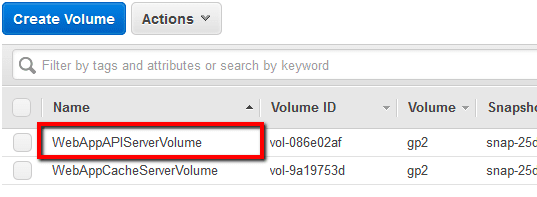Ensure that all your AWS EBS volumes are using proper naming conventions for tagging in order to manage them more efficiently and adhere to AWS resource tagging best practices. A naming convention is a well-defined set of rules useful for choosing the name of an AWS resource. Cloud Conformity strongly recommends using the following pattern (default) for naming your EBS volumes: ^volume-(ue1|uw1|uw2|ew1|ec1|an1|an2|as1|as2|se1)-([1-2]{1})([a-c]{1})-(d|t|s|p)-([a-z0-9\-]+)$. In case you need to create your custom naming pattern, the default one can be easily replaced within the rule settings available on Cloud Conformity console.
This rule can help you with the following compliance standards:
- APRA
- MAS
For further details on compliance standards supported by Conformity, see here.
This rule resolution is part of the Conformity Security & Compliance tool for AWS.
Naming (tagging) your AWS EBS volumes logically and consistently has several advantages such as providing additional information about the volume location and usage, promoting consistency within the selected environment, distinguishing fast similar resources from one another, avoiding naming collisions, improving clarity in cases of potential ambiguity and enhancing the aesthetic and professional appearance.
Default Pattern Format
volume-RegionCode-AvailabilityZoneCode-EnvironmentCode-ApplicationCode
Default Pattern Components
- RegionCode
-
(ue1|uw1|uw2|ew1|ec1|an1|an2|as1|as2|se1)for us-east-1, us-west-1, us-west-2, eu-west-1, eu-central-1, ap-northeast-1, ap-northeast-2, ap-southeast-1, ap-southeast-2, sa-east-1. - AvailabilityZoneCode
-
([1-2]{1})([a-c]{1})e.g. (2a|2b|2c) for us-west-2a, us-west-2b, us-west-2c - EnvironmentCode
-
(d|t|s|p)for development, test, staging, production. - ApplicationCode
-
([a-z0-9\-]+)for applications (e.g. nginx, nodejs) that run on these resources.
Default Pattern Examples
volume-us-east-1-2b-p-nginx
volume-us-west-1-2c-p-apache
Audit
To verify the naming conventions used for tagging your EBS volumes, perform the following:
Remediation / Resolution
To implement the appropriate naming convention for tagging your existing EBS volumes based on the default (recommended) pattern (i.e. ^volume-(ue1|uw1|uw2|ew1|ec1|an1|an2|as1|as2|se1)-([1-2]{1})([a-c]{1})-(d|t|s|p)-([a-z0-9\\-]+)$), perform the following:
References
- AWS Documentation
- Tagging Your Amazon EC2 Resources
- What are some recommended best practices for tagging my Amazon EC2 resources?
- Tag Restrictions
- AWS Command Line Interface (CLI) Documentation
- ec2
- describe-volumes
- create-tags

